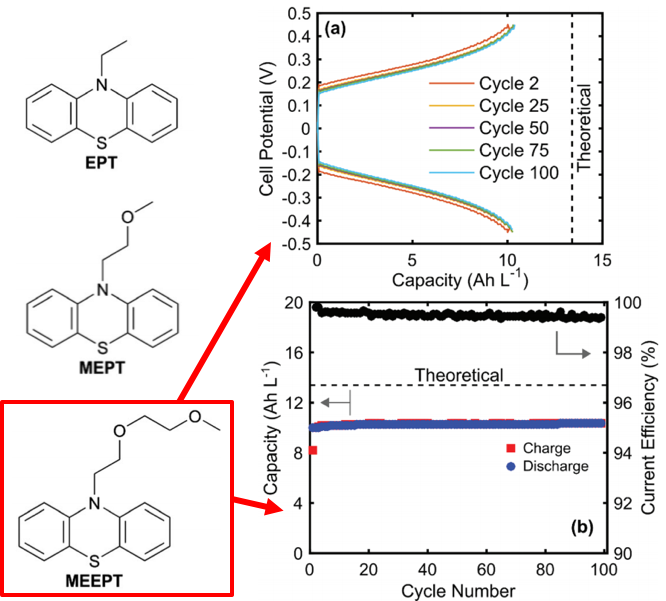
Scientific Achievement
We simultaneously engineered a soluble catholyte molecule and low resistance flow cell, enabling unprecedented high current density and undetectable capacity fade cycling of an organic molecule in a non-aqueous flow cell.
Significance and Impact
This work demonstrates that non-aqueous flow batteries can achieve the high current densities required for economically viable cycling with minimal capacity fade, at moderate-to-high active species concentrations
Research Details
- Highly soluble phenothiazine derivatives are designed for high solubility and stability.
- A non-aqueous compatible flow cell is engineered with the lowest ever reported area-specific resistance.
Aggressive cycling at 100 mA cm-2 for 100 cycles is demonstrated with undetectable capacity fade

